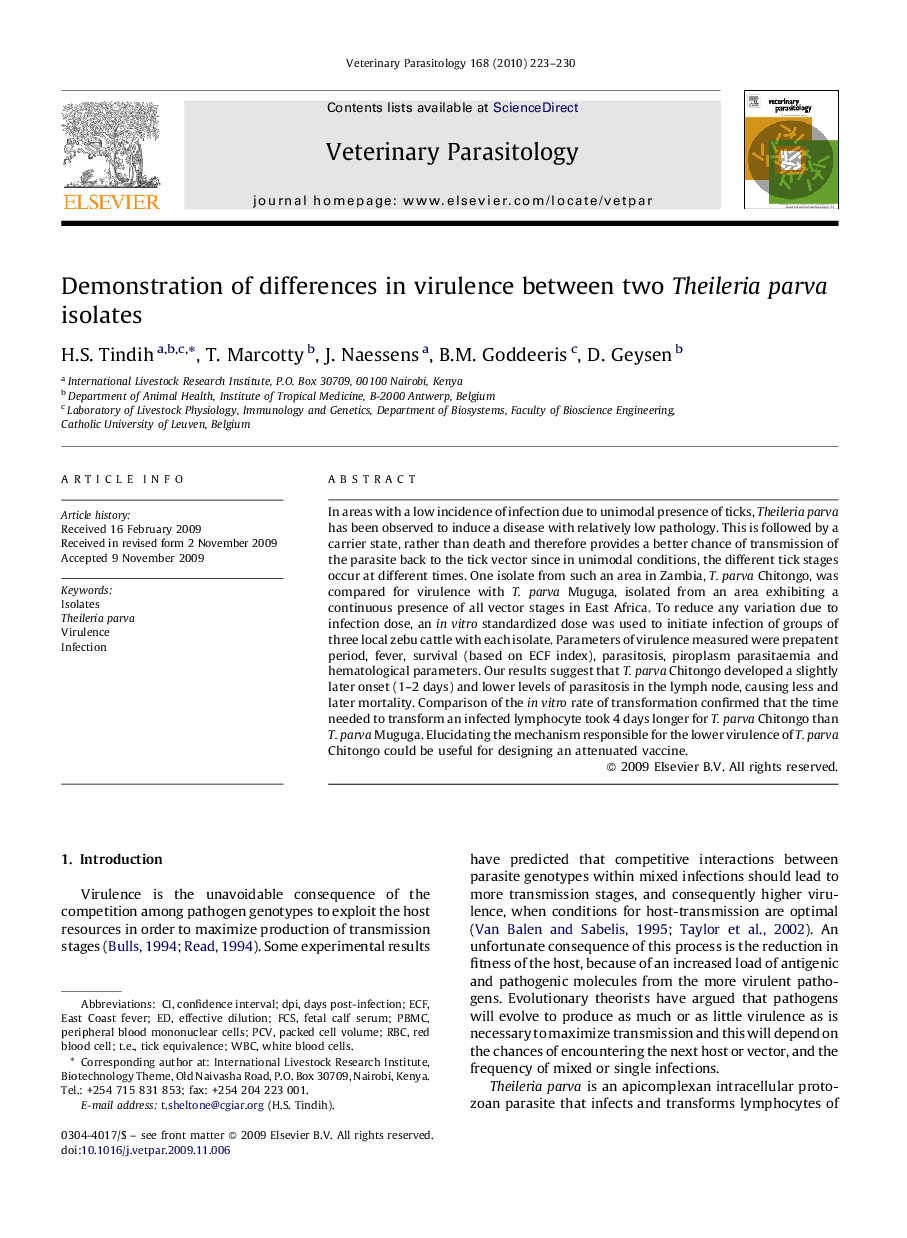| Article ID | Journal | Published Year | Pages | File Type |
|---|---|---|---|---|
| 2470781 | Veterinary Parasitology | 2010 | 8 Pages |
In areas with a low incidence of infection due to unimodal presence of ticks, Theileria parva has been observed to induce a disease with relatively low pathology. This is followed by a carrier state, rather than death and therefore provides a better chance of transmission of the parasite back to the tick vector since in unimodal conditions, the different tick stages occur at different times. One isolate from such an area in Zambia, T. parva Chitongo, was compared for virulence with T. parva Muguga, isolated from an area exhibiting a continuous presence of all vector stages in East Africa. To reduce any variation due to infection dose, an in vitro standardized dose was used to initiate infection of groups of three local zebu cattle with each isolate. Parameters of virulence measured were prepatent period, fever, survival (based on ECF index), parasitosis, piroplasm parasitaemia and hematological parameters. Our results suggest that T. parva Chitongo developed a slightly later onset (1–2 days) and lower levels of parasitosis in the lymph node, causing less and later mortality. Comparison of the in vitro rate of transformation confirmed that the time needed to transform an infected lymphocyte took 4 days longer for T. parva Chitongo than T. parva Muguga. Elucidating the mechanism responsible for the lower virulence of T. parva Chitongo could be useful for designing an attenuated vaccine.
